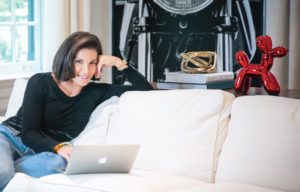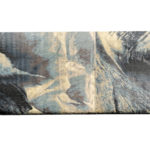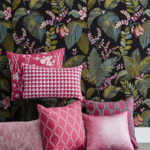originally published on Huffington Post
Thinking I’ve made a great new friend, I accept an invitation to dinner at their house. Shock and awe — or shock and fright — a giant moose head is mounted above the fireplace and a pair of huge antler light fixtures over the dining room table. Appetite successfully killed along with a total re-evalution of these new friends with whom it now seems I have very little in common after all, based on the various dead animals’ parts dotted around their house.
I can just about handle a giant trophy fish tacked onto a wall, but the abundance of cowhide rugs under coffee tables makes me queasy and I am positively pukey when I see a set of goat antlers resting on a side table or used as book ends. It’s TRENDY! You’ve seen them everywhere; it’s been a design trend for several years now along with obviously fake (faux) designer creations inspired by animals. Would you prefer a deer bust of corrugated cardboard or a resin reproduction of a rare ibex head mounted to your walls? Or, perhaps you’d like a horse’s head made of pennies mounted in the entry to greet your guests? To many of us, these trappings can be off-putting while to others, they are impressive and an irresistible trend.
Year after year, animal print, hides, fur, tusks et al find their way into the home as design elements in various spaces; not surprising, considering that the use of “animalia” as decor in the home dates back centuries, when, to be fair, they didn’t have the choice of faux and tended to eat the animals as well as enjoy their pelts. Several hundred years later, it was encouraged as home decoration by the English: Victorians loved to hunt and kill all the exotic creatures they discovered living in their vast empire, thereby encouraging a surge in taxidermy expertise so the small, dead, stuffed creatures such as birds and insects could be displayed under domes of glass “realistically” fluttering on a twig. The larger game was stuffed and displayed in poses roaring or snarling to showcase the men’s prowess at killing tigers and lions et al rather than marvel at the dead creatures.
But, I digress, a little, since such things are recognized as nasty, and taboo to most of us, excluding Michelle Bachmann and her ilk (not elk!).
My point is, to emulate dead animals and their parts as decoration is pretty disgusting, and as a design statement, it also fills me with ennui. Yet it’s a design trend showing no signs of slowing down.
Faux Taxidermy, or Designer ‘Fauxidermy’, as the concept has been coined, has gained considerable momentum over the last couple of years. These creations, like the cardboard busts of deer, elephant, rhino and moose mimic the realism of the animals in shape and form but are fashioned in a variety of materials, creating an abstract look and feel.
Although it is pegged as “clever and cruelty-free,” the ‘Fauxidermy’ trend essentially perpetuates the concept of killing an animal for its bits and pieces, like a tusk or a pelt, all in the pursuit of aesthetic enterprise. I want to move on and encourage a trend where we choose to marvel at and adorn our homes with the beauty and magnificence of these wild creatures, with all body parts intact. Wall art with magnificent photography: look for Beverly Joubert’s images of elephants in the wild. Choose paintings, sculptures, realistic or abstract or animal images woven into fabrics, rather than a faux zebra rug or a sullied Lion’s head on the wall.
FAUX FOR THOUGHT: most often, Animalia decor derives from wildlife that are endangered or on the brink of extinction.
If you absolutely must express yourself with the use of animal hide, fur, antlers etc., then at the very least make sure it has been harvested responsibly and humanely. With the current health of our planet and the impact of unnecessary hunting of the animal kingdom, it is essential that we become more aware of the essential dignity of all creatures, and take care of what we bring into our homes to put out on display. Simply put, aesthetically, and ethically as a design trend, the use of animal parts is wrong and in my opinion boring: We need to move on.







